Idaho was historically a western state where gold was discovered, so many new residents flocked to the area, hoping to make it rich.
The diverse and challenging geography made it one of the last locations to be visited by European colonists, so Idaho is a relatively new state.
As a Boise suburb, Nampa is the third most populous city in the State, with a population of around 100,000.
Known for food processing, manufacturing, and agribusiness, Nampa has recently attracted a mix of new restaurants and retail sites.
If you’re considering moving to Nampa, there are many pros and cons to consider before relocation.
Keep reading to learn more!
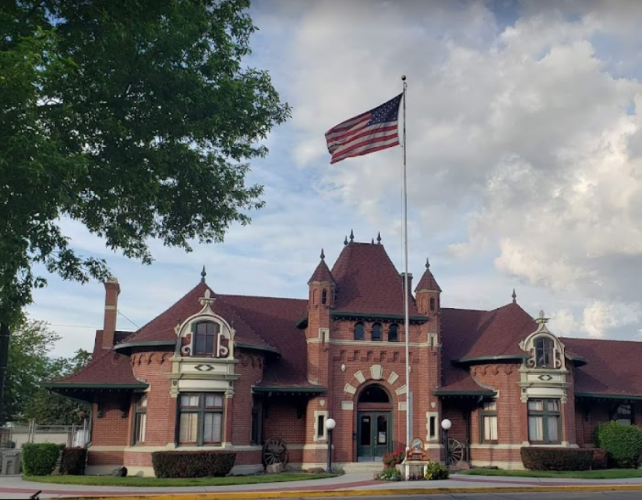
Contents
Pros of Living in Nampa, ID
For those looking to move to Idaho, many fantastic pros exist to living in the area, including:
1. Abundant Outdoor Activities
Nature lovers are drawn to Nampa because of its easy access to outdoor recreational activities.
Fishing, hunting, birdwatching, hiking, camping, stargazing, kayaking, rafting, and boating are regular aspects of the local life in Nampa.
2. Agricultural State
Known as the Gem State, Idaho has an extensive agricultural industry for potato production.
As a Boise suburb, Nampa is close to many potato farms, so fresh produce at farmers’ markets is the way of life.
The area boasts fertile soil and a favorable climate, so alfalfa, corn, peas, beans, barley, wheat, and potatoes are abundant.
Furthermore, there’s plenty of land for cows and other animals, so the dairy industry is strong.
3. Affordable Housing
One of the primary draws to Nampa is the affordable housing and low living cost compared to other U.S. cities.
Those looking to relocate can purchase a home in Nampa for under $300,000 or rent a two-bedroom apartment for around $1,500.
Also, groceries, electricity, and taxes are lower in Nampa and Idaho.
The cost of living drops significantly if you’re planning to move from a major city like New York, Los Angeles, or San Francisco, which has excessive living costs.
4. Great Place to Retire
Nampa and Idaho, in general, are popular places for retirees who want a peaceful and relaxing lifestyle.
The low cost of living and robust healthcare system, especially for those with fixed incomes, make Nampa a popular place to grow old.
Although retirement may feel like a long way off, putting down your roots in the same State you wish to retire is always a good move.
Also, there are plenty of elderly community events, medical centers, and accessible outdoor recreation to help seal the deal.
5. Growing Economy
Boasting an unemployment rate of only 2.7 percent, this trend is expected to continue.
Job growth in the Boise area, including Nampa, is expected to increase by 22 percent in the coming years versus a national average of only 6.3 percent.
Although wages are lower in Nampa than in the rest of the U.S., the positive job growth, stability, and lower cost of living counteract these wages.
The Nampa area offers many work opportunities, from tourism and energy production to beer manufacturing and agriculture.
6. Low Crime Rate
Since Nampa is relatively spread out with plenty of open spaces, it’s an excellent place to live in safety.
The worst crimes are minor property damage, which occurs in almost all cities and towns across the U.S.
Also, cities and counties heavily invest in the law-enforcement community, which is one of the leading reasons for fewer incidences.
7. Popular Destination But Not Overly Popular
Nampa continues to be an attractive destination, with more people moving to the area than in the past.
Although there’s been a considerable influx of new residents, housing costs are expected to increase in the coming years, especially in desirable places like Nampa.
Depending on your viewpoint, urbanization can be a pro or a con.
On the one hand, home prices will increase, but access to public services and expansion will also improve.
Therefore, moving early when it’s popular but not overly popular is a robust decision.
8. Small-Town Feel
Nampa, and most of the rest of the State, have a small-town feel that is difficult to replicate in other states.
That means each community is friendly and welcoming and delivers a charming atmosphere, ideal for those looking for a close-knit, laid-back way of life.
Nampa’s Main Street offers an abundance of bars, restaurants, and other attractions in a centrally located and walkable area.
Although the city has a population of 100,000, the density is lower, so it’s easier to find the peace and relaxation of a small town.
9. Stunning Scenery
Renowned for its natural beauty, Idaho boasts deserts, rivers, forests, and mountains, all within a short drive from Nampa.
Given its location, Nampa has easy access to the Sawtooth Mountains, which offer breathtaking views, backpacking, hiking, and fishing, and the Deer Flat National Wildlife Refuge, which is in the city’s backyard.
Although the deserts of southern Idaho may require a weekend trip, Bruneau Dunes State Park offers otherworldly dunes and sagebrush, ideal for stargazing and camping.
Cons of Living in Nampa, ID
Before calling that moving company, it’s essential to understand the downsides of living in Nampa, including:
1. Can Feel Isolated
The State comprises 88 percent rural counties, so life can feel isolated fast when leaving the Boise area.
Although Nampa is a typical suburb, the lack of extensive city amenities, low population density, and harsh winter weather often make residents feel isolated and depressed, especially when living on a farm or in a sparse area.
2. Few Higher Education Opportunities
Idaho State University, the University of Idaho, and Boise State University are the three most popular college destinations.
Boise State University and Idaho State–Midien are the two closest campuses for those looking to move to Nampa.
There are other smaller colleges throughout the State, but that’s about it.
Idaho ranks 43rd in the U.S. for math and reading scores, high school graduation rates, and school quality, so there’s room for improvement.
3. Frigid Winters
The winters in Nampa can be brutal and are long and grey.
In addition to the below-freezing temperatures, the area experiences considerable snow.
This wintery weather can be challenging for those from milder temperatures with little-to-no snowfall.
Back then, country roads were rarely plowed, and new residents also needed to winter-proof their homes, which took time and cost money.
4. Guns Are Prominent
The Second Amendment is highly protected and taken seriously across the State.
This isn’t because everyone is itching to have a gunfight but because hunting is a way of life, and there’s a strong sense of protecting your property, family, and friends.
Therefore, the laws dictate it’s an open carry state, meaning you can carry a gun publicly.
Also, holding a license to carry a firearm is not required, so holsters around the hips are a common sight.
The three most controversial topics are guns, trucks, and gears, so it can be challenging if you’re not used to this.
5. Lack of Entertaining Activities
Although Nampa is full of natural beauty, it’s known for having few attractions or activities.
There are no amusement parks or theme parks in the State, and Boise is relatively small with a limited history.
The biggest draw is Boise State football games on Saturdays, but the season only lasts four months, so finding other activities can be challenging.
For those moving from major cities, this can be a difficult adjustment.
6. Limited Public Transportation
Although there’s some bus service in Nampa, it’s limited outside of morning and evening commutes into and out of Boise.
Due to the region’s rural nature, the State is not well-equipped with mass transit options, so it isn’t easy to access certain places without a car.
There’s limited intercity rail service, but the timetables are not regular.
If you plan to only stay in Nampa, it’s an incredibly walkable city.
7. Limited Shopping Opportunities
If you come from a place with luxury brands and other high-end shopping opportunities, you must order them online or go out of State to satisfy these cravings.
Standard stores like The Home Depot and Walmart are available in Nampa, but other options are limited.
Although there has been an influx of new residents, which is helping change this disadvantage slightly, the shopping options are much more limited than in other cities in the U.S.
This could be a significant consideration before moving for those who love shopping.
8. Prone to Wildfires
The overcrowding of forests, dying and dead trees and dry summers are the perfect mix for forest fire conditions.
With forests surrounding Nampa, the area is highly prone to this natural disaster during the summer, resulting in dangerous conditions, property damage, and poor air quality.
Those with allergies and respiratory issues must learn to protect their residence from wildfires.
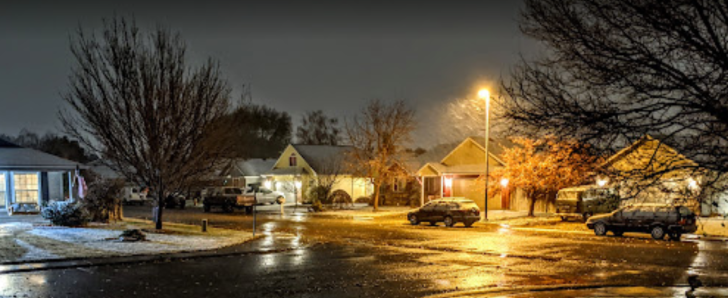
17 Pros and Cons of Living in Nampa, ID – Summary Table
| Pros of Living in Nampa, ID | Cons of Living in Nampa, ID |
|---|---|
| 1. Abundant Outdoor Activities | 1. Can Feel Isolated |
| 2. Agricultural State | 2. Few Higher Education Opportunities |
| 3. Affordable Housing | 3. Frigid Winters |
| 4. Great Place to Retire | 4. Guns Are Prominent |
| 5. Growing Economy | 5. Lack of Entertaining Activities |
| 6. Low Crime Rate | 6. Limited Public Transportation |
| 7. Popular Destination But Not Overly Popular | 7. Limited Shopping Opportunities |
| 8. Small-Town Feel | 8. Prone to Wildfires |
| 9. Stunning Scenery |
Nampa Safety Overview
READ THE FULL REPORT: Nampa Safety Review
Safety Index:
- OVERALL RISK: LOW
- TRANSPORT & TAXIS RISK: LOW
- PICKPOCKETS RISK: LOW
- NATURAL DISASTERS RISK: LOW
- MUGGING RISK: LOW
- TERRORISM RISK: LOW
- SCAMS RISK: LOW
- WOMEN TRAVELERS RISK: LOW
Frequently Asked Questions
Is Idaho a good place to live?
Living in Idaho has many more pros than cons.
The Gem State is a hidden gem comprising exciting outdoor adventures, a strong economy, a low crime rate, a growing job market, and a low cost of living.
One of the other main draws of Nampa is the access to the UI – -Meridien and Boise State University, which is perfect for young families who want their children to go to school locally and still have the college experience.
What are the winters in Nampa like?
The average daytime temperatures are in the 30s, which means overnight lows regularly dip below freezing.
During the coldest months, the temperatures can fall below zero.
Also, Nampa experiences significant snowfall throughout the winter season.
How much money must you make to live comfortably in Nampa?
Idaho is the 17th among all states with the highest living wage necessity, so a single Idahoan must earn at least $58,000 per year to live comfortably.
This includes being able to pay rent, groceries, utilities, and other necessities while having money remaining for entertainment.
What are the most common jobs in Nampa?
According to the Idaho Department of Labor, the five most popular job categories include production, transportation and moving, food preparation and service, sales, and office and administrative support.
What are a few must-knows before moving to Nampa?
Before moving, it’s essential to know that Boise State fans are hardcore; Idaho is heavily rich in natural resources, the weather can be extreme in the summer and winter, Shoshone Falls will blow you away, and if you love rafting, you will love the State.

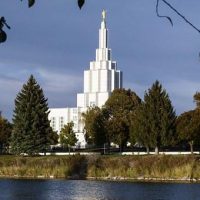
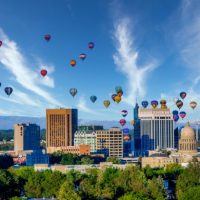
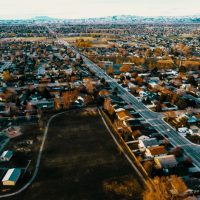
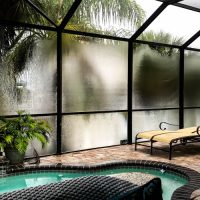
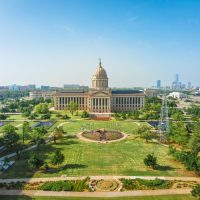
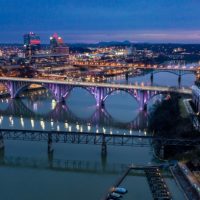





Nampa, Idaho offers a mix of outdoor activities, affordable housing, and a growing economy, but it may feel isolated and have limited entertainment options, making it a great place to retire or raise a family, but not ideal for those seeking a bustling city life.
We lived in Nampa for a few years now, and this list really captures the essence of the city. The small-town feel and affordable cost of living are definitely big pros, but the rapid growth can sometimes make traffic a headache.